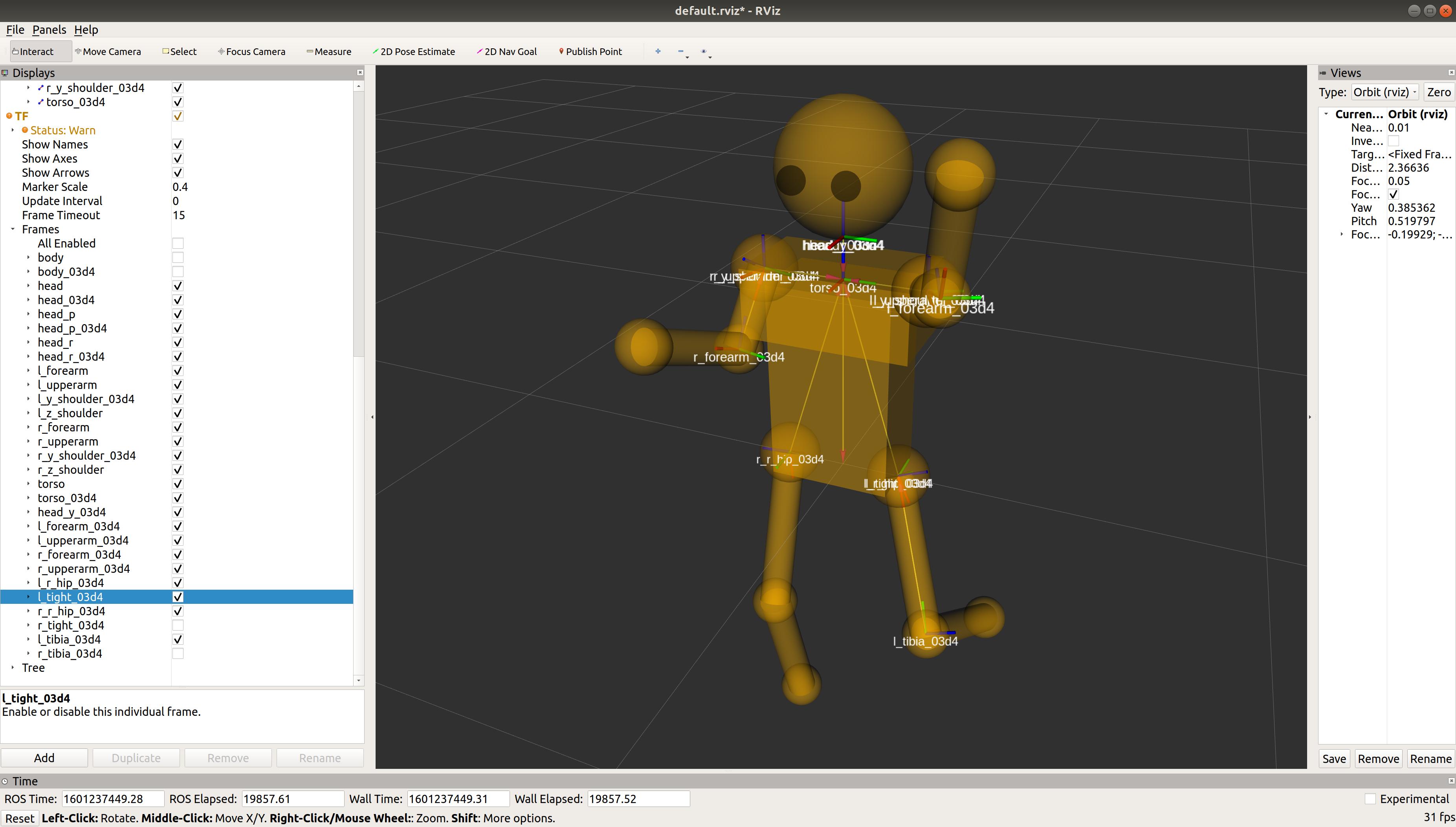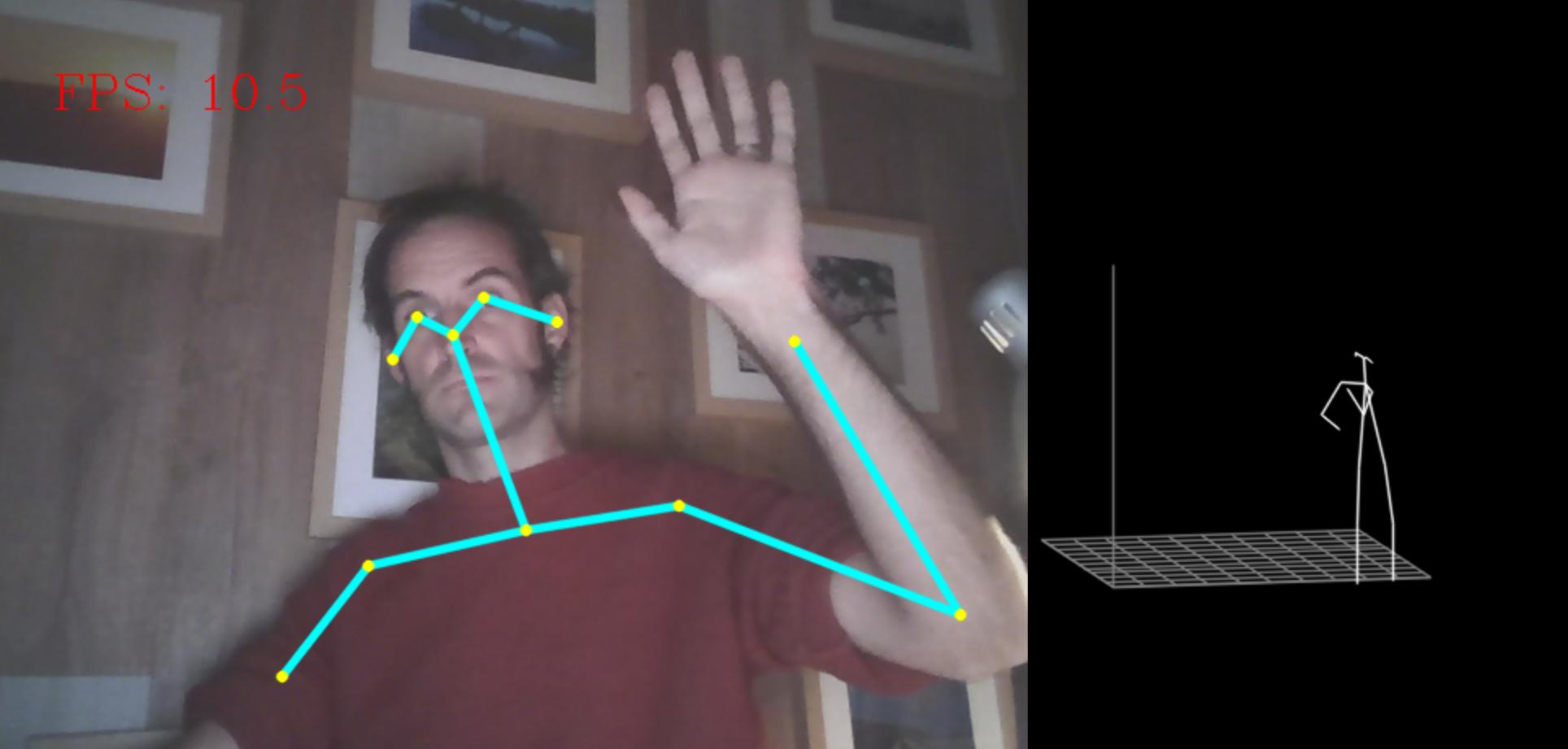
Overview
hri_skeletons detects and tracks human bodies in both 2D (2D keypoints of the body, in the image space) and 3D (generating on the fly URDF models for each detected humans, alongside their sensor_msgs/JointState and TF trees).
The detection relies on the open-source Intel OpenVINO toolkit, requires only a RGB stream, and runs at ~15FPS on an Intel 10th gen CPU.
Installation
Follow first the general ROS4HRI installation instructions.
- then:
$ cd ~/src $ git clone https://git.brl.ac.uk/ROS4HRI/hri_skeletons.git $ cd hri_skeletons $ mkdir build && cd build $ cmake -DCMAKE_BUILD_TYPE=Release -DCMAKE_INSTALL_PREFIX=~/dev .. && make && make install
You can test this node by running:
$ rosrun usb_cam usb_cam $ rosrun hri_skeletons run image:=/usb_cam/image_raw _debug:=true _model:=$HOME/openvino_models/public/human-pose-estimation-3d-0001/FP16/human-pose-estimation-3d-0001.xml
which should display something like that (debug mode = true):

ROS API
Subscribed topics
image (sensor_msgs/Image)
- input RGB stream
Published topics
For each detected body, an unique id is created, and a corresponding topic namespace humans/bodies/<id> is created. Within that namespace, the following topics are published:
humans/bodies/<id>/joint_states (sensor_msgs/JointState)
- the human body joint state
humans/bodies/<id>/skeleton2d (hri_msgs/Skeleton2D)
- the 2D coordinates of the skeleton's bones, with respect to the source image.
Parameters
model (string)
- The full path to the OpenVINO model for human 3D pose estimation
debug (bool)
- If true, will open 2 debug windows, one with the 2D skeleton overlaid onto the input image, one with a 3D view of the skeletons.
